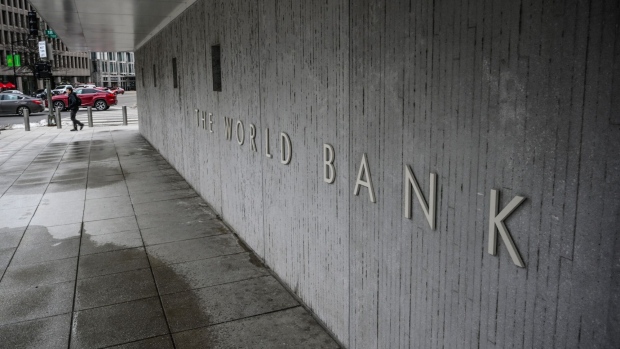Mar 28, 2024
World Bank Unlocks Secret Data for Emerging Market Finance
, Bloomberg News

(Bloomberg) -- World Bank Group has published a trove of proprietary data it says can help boost investment in emerging markets by providing investors with the tools they need to better assess risk.
“The publication of this data is aimed at one goal: getting more private-sector capital into developing economies to drive impact and create jobs,” World Bank President Ajay Banga said in a statement.
The statistics, published Thursday, detail the credit-risk profile of private and public sector investments across a host of developing countries. They include historic sovereign default and recovery rate data from the International Bank for Reconstruction and Development, the World Bank’s lending arm, as well as private sector default statistics broken down by internal credit ratings from International Finance Corp.
Over the past few years, the World Bank and a group of 24 other multilateral development banks have faced mounting pressure from investors and bankers, as well as the G20, to share their collective data on $1.5 trillion of emerging market debt, currently housed in Luxembourg in the Global Emerging Markets Risk Database, or GEMs.
A sweeping debt crisis in the emerging markets has brought the issue to the fore, and Banga has made it a priority to address the issue since he joined the World Bank last June.
Read More: Bankers Are Pushing to Unlock Secret Data for Climate Loans
Officials at Citigroup Inc., Mitsubishi UFJ Financial Group Inc. and other banks contend that access to such data will allow them to adjust their risk calculations, closing the gap between perceived and real risks. This, in turn, could allow them to charge less to lend and possibly offer financing in places and for projects they would otherwise avoid.
The statistics published by the World Bank are separate from but “complement” GEMs, and may be combined with that data in the future, according to the the World Bank. GEMs published new information on Monday related to recovery rates for private and sub-sovereign borrowers.
“These disclosures will be important in informing investment decisions in emerging markets and developing countries,” said Faheen Allibhoy, global head of multilateral institutions and development banks at JP Morgan Chase & Co., in a statement.
The data also is useful for credit-rating companies, and may help protect the debt ratings of multilateral development banks, or MDBs, as they look to deploy more capital in development and climate finance.
Kathrin Muehlbronner, senior vice president of the sovereign risk group and global MDB lead at Moody’s Ratings, said the data published by the World Bank is “important detail” that “goes towards what we’ve been asking for.”
Moody’s would now “like the same level of detail” from other MDBs, she said.
Muehlbronner said such data could offer “downside protection” for MDBs as they seek to extend their lending in emerging markets. Leverage and the riskiness of lending are important aspects of an MDB’s credit profile, so granular data may help adjust the risk evaluation and help compensate for any increase in leverage, she said.
Julie Monaco, head of public sector at Citigroup, added in a statement that the release of the World Bank and GEMs data is “an important step in the evolution of MDBs and their ability to crowd in private capital to tackle climate change and development.”
(Updates title of Citigroup official in last paragraph.)
©2024 Bloomberg L.P.





